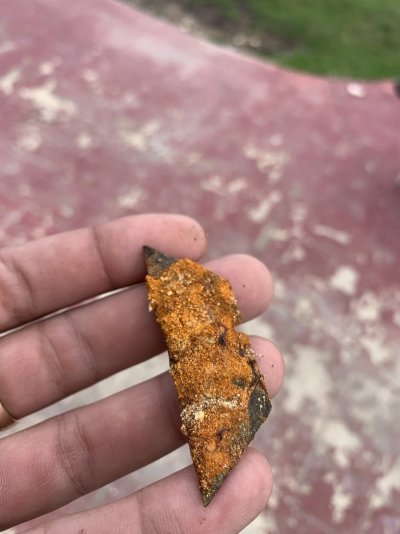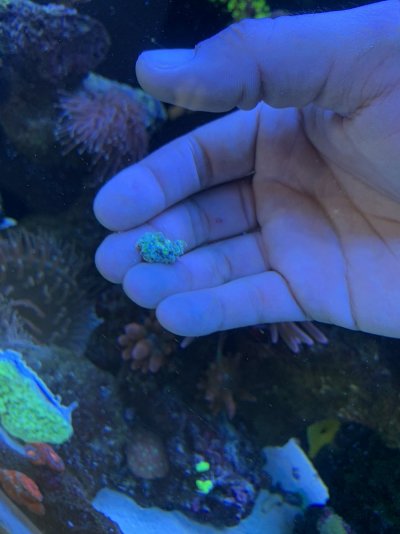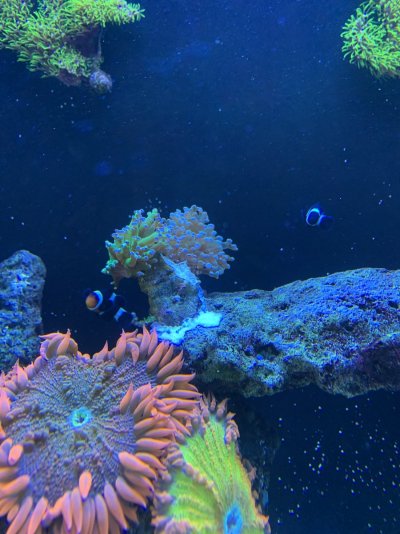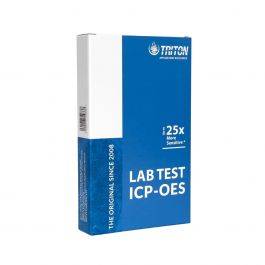Hi all, early last year I got into adding corals to a very very established tank.
TLDR version : 2 torches, a head off a 3rd torch and all sps corals died. Now my frogspawn that was always super healthy has dropped one of its polyps and was left with bare skeleton. I hear this happens as a last ditch effort of survival. What could be causing all the stress?
Params -
nitrate - 20 - 30 PPM
Ph - 8.0
Calcium - 400
Alk - 8.4
Mag - 1350
a deeper look:
Everything was going good for a while, everything was super healthy!
until I lost a torch, let’s call it torch #2
since then, any SPS I had have died, and I have lost another torch, this one is torch #3.Both torches were gone to brown jelly, #2 was over a week. #3 was a beautiful cotton candy and was gone in less than 3 days.
everything else in the tank is doing fine, but euphylia and sps seem to have big issues in my tank tho.
I decided I was going to stop purchasing torches and sps and just focus on growing the corals that are doing okay. At least until I see some type of growth and progress then maybe give it another try.
Then a few months back my first torch I ever bought, torch #1, a 3 header that was doing great for almost half a year developed bjd on one of its heads. Sucked the jelly out and the torch lost that head but the other 2 heads survived.
Then yesterday a polyp on my frogspawn that has been closed pretty much since the torch #1 BJD incident a couple months back, drops. As in the frogspawn let it go, leaving only the bare skeleton on the frag. The polyp still looks alive since it’s not deteriorating. The polyp is currently sitting on the sand and the frogspawn frag was left with 1 healthy polyp, I ripped off the dead skeleton since it was just ugly.
Now I am really frustrated since euphylia are my favorite coral and I’m pretty much losing them!
Worth noting,
- the issue with my frogspawn polyp closing started right after the torch #1 lost a head to BJD. Maybe it affected this polyp?
-all my LPS are plumpier than ever
- I am always hands on the tank, upgrading equipment and trying to make the best possible environment for the inhabitants. But pretty much any changes I made to the tank were in effort of trying to save something that was dying.
I have changed flow by adding two power heads and 2 RFGs (not all at once) I did this to try to better the flow for my sps they ended up getting worse and dying anyways. lighting changed (added 2 ati blue t5s) did this in case lighting was not sufficient , upgraded skimmer to a reef octopus 150s for better filtration all within last year. I even tried dosing nopox over a few weeks thinking high nitrates were my problem here and when my nitrates got to the 2-5 PPM levels, there was no apparent change in the well-being of the corals, everything kept on doing how they were doing. The good stayed good, and the bad stayed bad.
a week ago or so, I found this nasty rusty blade buried in my sand. it was a bittersweet feeling cause I thought I may have found the root to my problems. Now I am seeing there is something else.



TLDR version : 2 torches, a head off a 3rd torch and all sps corals died. Now my frogspawn that was always super healthy has dropped one of its polyps and was left with bare skeleton. I hear this happens as a last ditch effort of survival. What could be causing all the stress?
Params -
nitrate - 20 - 30 PPM
Ph - 8.0
Calcium - 400
Alk - 8.4
Mag - 1350
a deeper look:
Everything was going good for a while, everything was super healthy!
until I lost a torch, let’s call it torch #2
since then, any SPS I had have died, and I have lost another torch, this one is torch #3.Both torches were gone to brown jelly, #2 was over a week. #3 was a beautiful cotton candy and was gone in less than 3 days.
everything else in the tank is doing fine, but euphylia and sps seem to have big issues in my tank tho.
I decided I was going to stop purchasing torches and sps and just focus on growing the corals that are doing okay. At least until I see some type of growth and progress then maybe give it another try.
Then a few months back my first torch I ever bought, torch #1, a 3 header that was doing great for almost half a year developed bjd on one of its heads. Sucked the jelly out and the torch lost that head but the other 2 heads survived.
Then yesterday a polyp on my frogspawn that has been closed pretty much since the torch #1 BJD incident a couple months back, drops. As in the frogspawn let it go, leaving only the bare skeleton on the frag. The polyp still looks alive since it’s not deteriorating. The polyp is currently sitting on the sand and the frogspawn frag was left with 1 healthy polyp, I ripped off the dead skeleton since it was just ugly.
Now I am really frustrated since euphylia are my favorite coral and I’m pretty much losing them!
Worth noting,
- the issue with my frogspawn polyp closing started right after the torch #1 lost a head to BJD. Maybe it affected this polyp?
-all my LPS are plumpier than ever
- I am always hands on the tank, upgrading equipment and trying to make the best possible environment for the inhabitants. But pretty much any changes I made to the tank were in effort of trying to save something that was dying.
I have changed flow by adding two power heads and 2 RFGs (not all at once) I did this to try to better the flow for my sps they ended up getting worse and dying anyways. lighting changed (added 2 ati blue t5s) did this in case lighting was not sufficient , upgraded skimmer to a reef octopus 150s for better filtration all within last year. I even tried dosing nopox over a few weeks thinking high nitrates were my problem here and when my nitrates got to the 2-5 PPM levels, there was no apparent change in the well-being of the corals, everything kept on doing how they were doing. The good stayed good, and the bad stayed bad.
a week ago or so, I found this nasty rusty blade buried in my sand. it was a bittersweet feeling cause I thought I may have found the root to my problems. Now I am seeing there is something else.





















